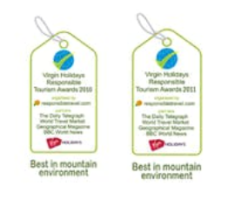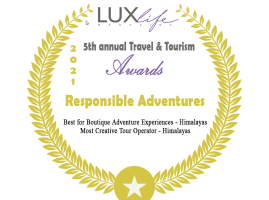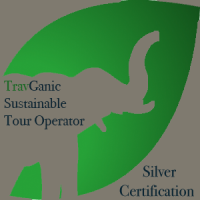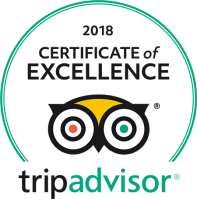Nar Phu Trek during March/spring season
Nar and Phu Valleys are located in a remote part of the Manang district on the Annapurna Range’s Northside. It is in what the Nepalese government calls the “Restricted Area,” where special permits are required and obtained by bonafide Trekking agencies of Nepal. This area was opened to foreigners in 2003.
The trek’s duration depends on the trekking group’s time and fitness level, opening up a few options.
It’s time for the actual trekking part.
If you have plenty of time between 3-4 weeks, you can choose to drive to Besisahar and start your trek to Koto on the main Annapurna Circuit trail. The hike takes four days to get to Koto. Then, you branch north to the restricted area of Nar and Phu from Koto.
You can come out of the “restricted area” via the more challenging and higher way via Kang La pass 5360m to Ngawal on the Annapurna Circuit trail or retrace your steps back to Koto.
If time is not a problem, you can continue towards Tilicho Lake and go over the Thorung La pass to Pokhara. Otherwise, you can take a jeep from either Ngawal or Koto (depending on your itinerary’s choice) back to Besisahar and return to Kathmandu.
Our group from Singapore had a short time to do this trek, so we did the quickest and safest possible itinerary for them. Here is an article about the Nar Phu trek we conducted for our Singaporean Group.
Style of Trekking – Camping.

Our trek to Nar Phu valley was going to be an entirely supported expedition-style camping trek. A camping trek requires many logistics as all camping equipment, food, and provisions must be reorganized and carried throughout the trekking trip.
Why do a camping trekking tour
The Nar Phu valley trekking area is newly opened and isn’t as developed with lodges/teahouses as the Annapurna, Langtang, and Everest regions. One has to be very fit to do a lodge trek in this area as the distances between villages are far, especially during the early spring. Most villagers wouldn’t have returned from the warmer lowlands to avoid the harsh winter.
Camping trek is a better option if you part of a larger group – 4 or more persons as some village lodges have only two rooms for trekkers. In addition, a camping trek gives your group flexibility, e.g., if some people in your group are not as fit or not well, your team can set up camp before the predestined location provided they find a suitable campsite.
The support team.
We had a team of a Trek leader (yours truly), three assistants’ guides, a trekking chef, three kitchen assistants for the chef, 12 mules, and a mule driver for a group of 9 trekkers for a 10-day trip.
Day 1) Our group from Singapore arrived in the afternoon. There were met at the airport and brought to their hotel for the pre-trek briefing. We met at the hotel lobby at an agreed time to go for dinner. We finished our meal and parted ways to rest due to their very early start to the day.
Day 2) Despite being on a tight schedule, we had to keep this extra day in Kathmandu as the Department of Immigration requires the original passports for the restricted area permit. While the trekking permit was being organized, the group went on a walking tour of Swayambhunath Stupa and walked through the back streets of Kathmandu into Basantapur Durbar Square – a World Heritage site before heading back to Thamel, the tourist district, for lunch. Once we ordered our lunch, the group was briefed on the journey’s timing the next day, what to expect on the trek, how our team delivered our service, etc. The trip briefing is done to save time while waiting for the meal to arrive. Our permits were issued by the end of our lunch. After that, we parted ways so everyone could return to final repacking for the trek as we had a very early departure.
Day 3) We had requested an early buffet breakfast at the hotel as we had two sections of driving for the day, which could take anywhere between 12-14 hours. While the group had breakfast, our staff loaded their trekking kitbags onto the van doing the journey’s first leg. The first part of the trip was to Besisahar – a mere 145km drive, but the winding road took 5 hours to reach. After that, we were to change vehicles and get into three jeeps for the rough track to Koto. The automobiles got loaded up while the group had lunch at Besisahar. It was a very tight squeeze with our nine trekkers, nine support crew, our camping gear, and food. Our team had left for Besisahar the previous day as they had to shop for fresh fruits and vegetables and organize the packing.
We arrived at Koto after dark at 7.30 p.m. The drive is very scenic, but the rough road is bone-jarring. However, the local drivers say the more load the jeeps have, the less bumpy the ride is due to the weight. We had another early night after dinner at the lodge.
The Nar Phu Trekking begins.

Day 4) We had ordered our breakfast the previous night to save time the following morning. We woke up to beautiful views of Annapurna II and Lamjung Himal. We had to check in with the police post with our special permits before entering the Nar Phu Valley. We left the Marshyangdi Valley a short hike later and joined the Nar River Valley. The walk is along a wooded area with a combination of an undulating trail but gently gaining altitude. We had started at 2600 meters, and our camp was going to be at 3200 meters. Most people head for the village of Meta at 3560 m, but we had planned to end our day two hours before that at Dharmashala (a resting place for travellers).
The Singaporean trekkers took a long time for photos, as many were photographers along the beautiful trail. We reached Chamchu for lunch 5 hours after starting in the morning. The narrow valley allows just a couple of choices for making hot lunch on a camping trek.
We continued our trek post-lunch once our caravan of mules finally caught up with us. It usually takes a day or two for the mule driver to organize the mules’ loads; typically, the mules are faster than the trekkers.
We continued to hike along the Nar River, crossing it several times over suspension bridges. We observed that the locals were busy with tree trunks shaving into building pillars and planks to construct new homes and guesthouses. We also had to let some porters carrying extensive posts on the narrow trail go past us.
We finally reached Dharamshala at around 5 p.m. It was a relatively small place with a concrete shelter, which we decided to use for our kitchen and the other end as a dining room. Our team had to pitch the tents in the limited space; they fit in the required six tents. The people at the back reached the campsite after dark, past 6.30 p.m. The trekkers were served a sumptuous meal before retiring for the night.
Day 5) Our team woke our trekkers with our signature Ayurvedic beverage in their tents. The trekkers packed their duffle bags after washing up before coming for breakfast. We started our trek after breakfast. We hiked on a gentle ascend for about 45 minutes, and the trail was a steep uphill climb for two hours to Meta. We were surprised to see our kitchen crew there preparing lunch at Meta as we had planned to have lunch at least another 90 minutes walk away. However, the villagers informed them that frozen water had broken the pipes and was yet to be replaced; this made our kitchen crew stop at Meta to prepare an early lunch. We enjoyed the views of Pisang and Kangguru peaks.
The wind picked up from 10.30 a.m. onwards as the windy season lasts in Nepal from mid-March until the end of April. We continued on the trek after our early lunch, contouring the hill for about 20 minutes before turning on to the Phu River valley. We hiked past some shepherd huts at Junam Goth, which the people of Nar use to avoid the colder winter in their village of Nar. They had a good number of little Pashmina goats. We could see the magnificent Monastery at Nar Phedi(base) and the trail that leads to the village of Nar. The path is a mixture of gentle climbs with some steep sections and short drops and ascends. Once we reached Lower Chyako, I realized the back persons were being left behind quite a distance. We could see the Mules were resting at Upper Chyako, and our kitchen staffs were about to approach the resting place of our mules. So I sent one of our assistants ahead to ask Sundar to go ahead and tell those ahead to stop at Chyako for the night rather than continue to our planned campsite at Kyang. Kyang is a 90-minute hike for regular trekkers, but at this pace and this late in the day, it could have taken between 3-4 more hours of trekking for the gentlemen at the back, which meant getting to camp well after dark.
The trail descends sharply to a riverbed before it begins on a reasonably steep ascend. We had several stops to rest and to allow the two at the back to catch up. One gentleman in his 60s was the slow one, while his excellent friend kept him company. He was all right with the slight ascends, flattish trails, and downhill bits, but once the climb gradient got steep, he would slow down.
Once we got close to the village of Upper Chyako, I waited for the stragglers at the back. Then, I got my backpack off and retraced the steps downhill to the Stupa to meet the rear of two gentlemen. When they caught up, I told them the news about our plan to stop earlier than planned, which relieved both of them. Once we reached the village’s flat, I headed in front to help pitch the big ‘star gazing’ tent as our dining tent. Our support crew was busy making tea, biscuits, or setting up the tents at the campsite. It was nice to have everything set up and everyone in camp before dark.

We had a sumptuous dinner; we filled the water bottles with hot water before everyone went to bed after admiring the bright stars in the night sky.
Day 6) We had started to get used to being woken up with the lovely beverage, washing up, packing our kit bags, and getting ready for breakfast.
We had a full day of hiking, going from 3750 meters in altitude to Phu, at 4150 meters. The hike started with an uphill climb with a slight descent and a small ascend before dropping to the settlement of Kyang. Doing this bit made us glad about stopping at Chyako as this hike, which was supposed to take 90 minutes, took our team 3 hours. However, the villagers said the lunch places, a shelter built by the government for adverse weather, would take only 90 minutes, which took us 3 hours to reach. While having lunch, a villager attending a “puja” ceremony at Phu arrived with his pony. We asked the Elderly gentleman at the back if he was confident to ride the pony to ease his difficulty and make his going faster, to which he agreed.
We trekked along the Phu River with some landslide areas. Some of the hills were exposed and rocky. The trekkers were advised to walk briskly along the landslip area as sometimes strong winds, and wildlife such as the Blue Sheep can send stones and rocks tumbling down the slopes. We had a short 20 minutes of a steep climb to the “Kani” – entrance gate to Phu village. Once we got there, the views were stunning. We could see the abandoned towns and the ruins of a fort. However, the gate is deceptive as the city is still good 20-30 minutes to reach. The village’s path is rocky, and sometimes the blue sheep hang around here during the late afternoon after coming down to the river for a drink.
This can be dangerous as moving animals can cause rock falls. Even a tiny stone can cause considerable injury/damage from high heights at breakneck speed.
Riding a pony did help get the gentleman who was at the back as he had been waiting for nearly an hour. The group had decided to have the luxury of sleeping in the lodge rooms rather than spend another night in tents. The lodge was very basic, with beds in the room. The rooms were dusty, as the landlady had returned to the village two days prior. Our assistant crew had to dust and sweep the rooms for our trekkers.
We stayed up longer than the previous days as we had arrived well before dark, and the next day was a rest day for acclimatization at Phu village. We had agreed to meet up at 8.30 a.m. straight for breakfast, as we didn’t need to repack.
Day 7) The idea of a “sleep in” is beautiful, but you rise with the daylight; it was still lovely just lying in bed. Our team set up the tables and chairs for breakfast on the ground floor’s roof when the sun was up and warm. We enjoyed a leisurely breakfast before getting ready to visit the Tashi Lhakhang Gompa (Monastery). First, we had to go through the lovely village and cross the Phu River, followed by a short but steep climb to the Monastery. There were some locals there to prepare for an annual death ceremony of a villager. Villagers of Nar were also attending the ceremony. We were surprised to learn that someone had come from New Jersey for this ceremony. It was interesting to find out that numerous people from these remote areas in the United States seek employment as their livelihood is difficult. We were informed that this Gompa was between 500-600 years old. The villagers were kind enough to treat us with Tibetan Butter tea, which was pretty nice – it can be an acquired taste for some. We visited the inside of the Monastery and absorbed the surrounding beauty before heading back to our lodge for lunch.
Everyone had a hot bucket of water to wash up in the afternoon, while some even did laundry. The afternoon was spent relaxing, swapping stories, having lots of laughter, etc. Some of the trekkers wanted to ride ponies back the rest of the trek. Some of my assistants and I spend some time trying to find ponies to hire. The villagers asked for around US$100 in local currency for a daily pony; even then, they couldn’t send pony attendants as everyone would be busy with the Monastery’s prayer ceremony. The group members decided to trek down to Chyako as the price of hiring ponies was stiff, and the villagers were going to be busy with the ceremony at the Gompa.
Day 8) We went through the same packing procedure before breakfast before retracing our steps back through Kyang village to Chyako. To save time, our kitchen crew had prepared packed lunch before breaking camp at Phu village. It was much more comfortable and faster, going downhill for all our group members. The wind picked up at 10 a.m., and the clouds built up. The wind was much colder on this day. Shortly we experienced light snowfall for a couple of hours. Due to this out, the group had broken up into two. When we reached Kyang, where we were to have lunch, the faster group was leaving, as the time difference of the gap was around 4 minutes. We started on our last leg of the journey for Chyako with two small climbs, some contouring, and a final descent to our campsite.
Our kitchen staff served another sumptuous Thai dinner that the famished trekkers gobbled down. Everyone was in good spirits as we arrived again in camp before dark. We managed to arrange three ponies for the rest of the trip for the slower trekkers.
We had a team discussion on whether we could keep our original itinerary of going over Kang La pass or retrace our steps via the more straightforward and lower route. Unfortunately, a few members were under the weather. We decided on keeping everyone safe and together; the worsening climate helped in making that decision.
Day 9) The people walking out started hiking while the pony riders waited for the ponies to be saddled. The pony riders caught up with the hikers in about an hour. We reached Meta village in about 3 hours and had some hot for lunch. Once again, the group decided to sleep in the guesthouse rooms and shower in the afternoon.
We observed that the traffic was getting busier with some trekkers and villagers returning from the lower settlements with caravans of mules carrying ration supplies. However, our trekkers were well-rested and happy with the shorter hike and the refreshing shower.
Day 10) We managed to find a fourth pony for our trekkers for the last two days of the trek. We started with a downhill hike and contoured along the narrow Nar River valley again. It was nice to see our views on our backs on the way up.
Our kitchen crew had stopped by a suspension bridge close to a hot spring to prepare lunch. The trekkers didn’t go down to where lunch was being made, as the improvised ladder was risky. Instead, one of our trekkers and assistants went for a dip in the hot spring while waiting for lunch.
We continued our trek post-lunch; although windy, the trees lessened the wind’s strength, making it a pleasant condition to hike in. The traffic was quite heavy, with caravans of mules bringing supplies for the villagers and porters carrying planks and beams for new construction.
We reached Chamchu around 3.30 p.m. Unfortunately, only two rooms were available, so it was given to those who needed them most, and the rest were to sleep in the tents.

Day 11) This was the last day of our trek. We planned to go to Koto, which was just 3 hours away from the lunch spot; this gave our kitchen staff plenty of time to shop for the last night’s dinner. It was a lovely morning with a cool temperature, and everyone enjoyed the trek and pony ride. We reached Koto on time; rooms were allocated to our trekkers after lunch.
Dark clouds started gathering around 2 p.m., raining heavily for a few hours from 3 p.m. We were delighted with the decision to return the same way we had gone up; otherwise, we would have been on the pass where it would be snowing. We would have been miserable on the blizzard and snowfall had we been on the pass. Those who had been lagging would have taken between 12-16 hours to complete the hike. They would have to descend the ponies from the top of the pass and trek down the steep slope with stones, scree, etc.
Our Singapore trekkers decided to celebrate the correct decision by having whiskey once it started raining. Our kitchen team began providing snacks after snacks to go with the drinks. The Singaporeans were generous enough to send a bottle of premium whiskey to our kitchen crew – which they only started drinking after they finished their duties.
We served another sumptuous dinner to mark the last night of the trek. Dancing started as soon as the support team joined the clients with the free flow of whiskey bought by the trekkers. The previous night’s party went on until about midnight.
Day 12) We had two days of driving to get back to Kathmandu. The jeeps were loaded on the rooftop carriers while our trekking team had breakfast. We started on our drive once the kitchen crew had washed the dishes and packed the utensils on the jeeps. We had 6-7 hours of driving on the fair-weather road to Besishar. We stopped by the gorgeous waterfall near the village of Chyamche for lunch before continuing our journey to Besisahar. We reached the town around 4.30 p.m. Everyone had the luxury of having a room with a bathroom and showers. We had agreed to meet up for dinner at 6 p.m.; the group generously invited all the support team members for drinks and dinner. It was a great end to the beautiful trekking expedition for everyone.
Day 13) The bus booked the previous afternoon was loaded, and we left for Kathmandu once everyone had breakfast. The drive back to Kathmandu to about 6 hours, with a stop on the way for lunch. Once at the hotel, the group checked in, collected their left baggage, and agreed to meet at a given time for dinner.
Day 14) The group members wanted to do their things before 6 p.m. as their flight was at 10 p.m. I had requested the hotel to provide two rooms for late check-out until 2 p.m. so they could use the rooms to rest or refresh themselves. We left for the airport at 6 p.m. Upon reaching the airport, we bade our goodbyes.
Another wonderful trekking trip had ended. But, most importantly, all members returned home to their loved ones safe and sound like on all our treks.
Check out our Trekking packages for Nepal, Bhutan, India, and Tibet.
















